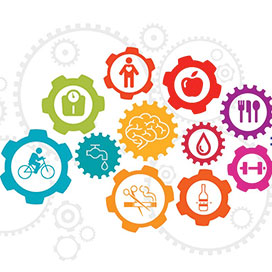Is Your Lower Back, Neck, and Knee Pain All in Your Head?
 Actually, this statement is true; unfortunately it is misunderstood and misused by well-meaning healthcare professionals and friends when trying to understand a painful condition and why it won’t go away. In order to truly understand pain it is important to recognize the role of the brain.
Actually, this statement is true; unfortunately it is misunderstood and misused by well-meaning healthcare professionals and friends when trying to understand a painful condition and why it won’t go away. In order to truly understand pain it is important to recognize the role of the brain.
The true part of this statement is that pain doesn’t actually become pain until it reaches your brain. We often think that pain occurs at the site of injury, but it doesn’t. Just as an example, let’s say that you were to burn your hand. Before you actually ‘feel’ the pain, a message or neurological impulse is sent from your hand to your brain. Once the neurological impulse reaches a specific part of the brain you ultimately ‘feel’ the pain.
If that message does not reach the brain, you will not feel the pain in your hand. Science has shown us that because we all have unique brains and experiences pain is different for everyone. This is in part due to the fact that the incoming signals of pain are spread around in your brain and mixed with areas associated with emotions and feeling.
Once the signals of pain are shared around your brain they travel back down the nervous system and are put through a funnel of previous experiences, emotions and your body’s own pain dampening system to ultimately give you the sensation you experience as pain. This processing of pain is what helps us understand that pain is not like a light switch that can be turned on and off.
It also helps explain why two different people with the same injury may have completely different responses. When I am treating patients, there are often times when I see two people with similar injuries. It is not surprising for me to hear one patient express that “it feels ok, a little sore, but I can still go for a 10 mile run”, while another is hobbling around in agonizing pain and can barely walk.
The same science that has shed light on the pathways involved with the sensations of pain also now tell us that pain is not merely just a subjective sensation that is uncomfortable to experience. People in pain have changes that occur in their nervous system and the wiring of their brain, ultimately resulting in chronic pain and disability. When this occurs, an individual may experience mild to severe pain even without having any identifiable injury or cause.
For anyone experiencing chronic pain, a complex series of changes has occurred in the electrical circuitry of your nervous system which leaves you with ongoing suffering even without any injury. In essence, your nervous system has learned to be more perceptive to pain; your pain stimulating pathways have been left in an “on” position.
The good news is that your nervous system can be taught to function normally again if it is provided with the right stimulus. One of the key teachers involved in normalizing the brain to reduce chronic pain is movement. Movement has the ability to become medicine if properly done and has been used since the beginning of time for pain relief. Movement is also validated in numerous clinical trials as an effective treatment for muscle and joint pain.
